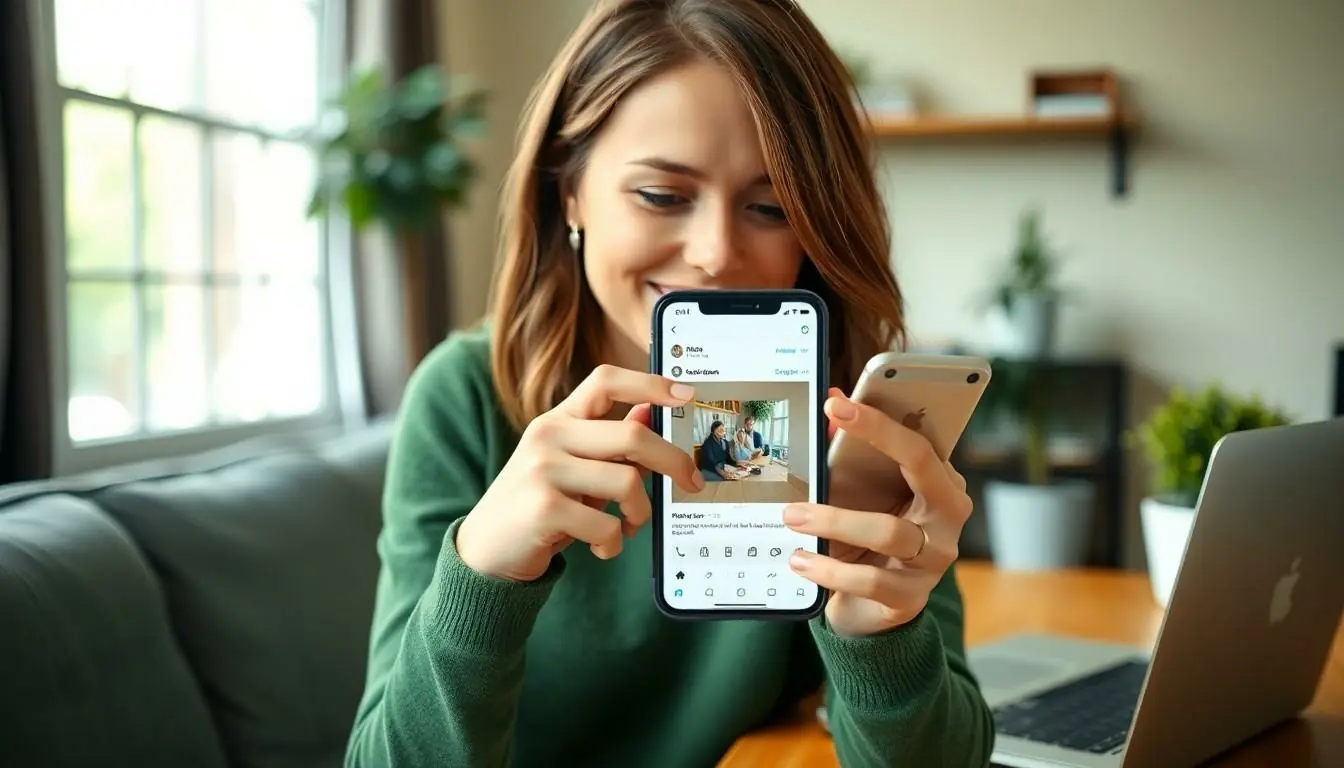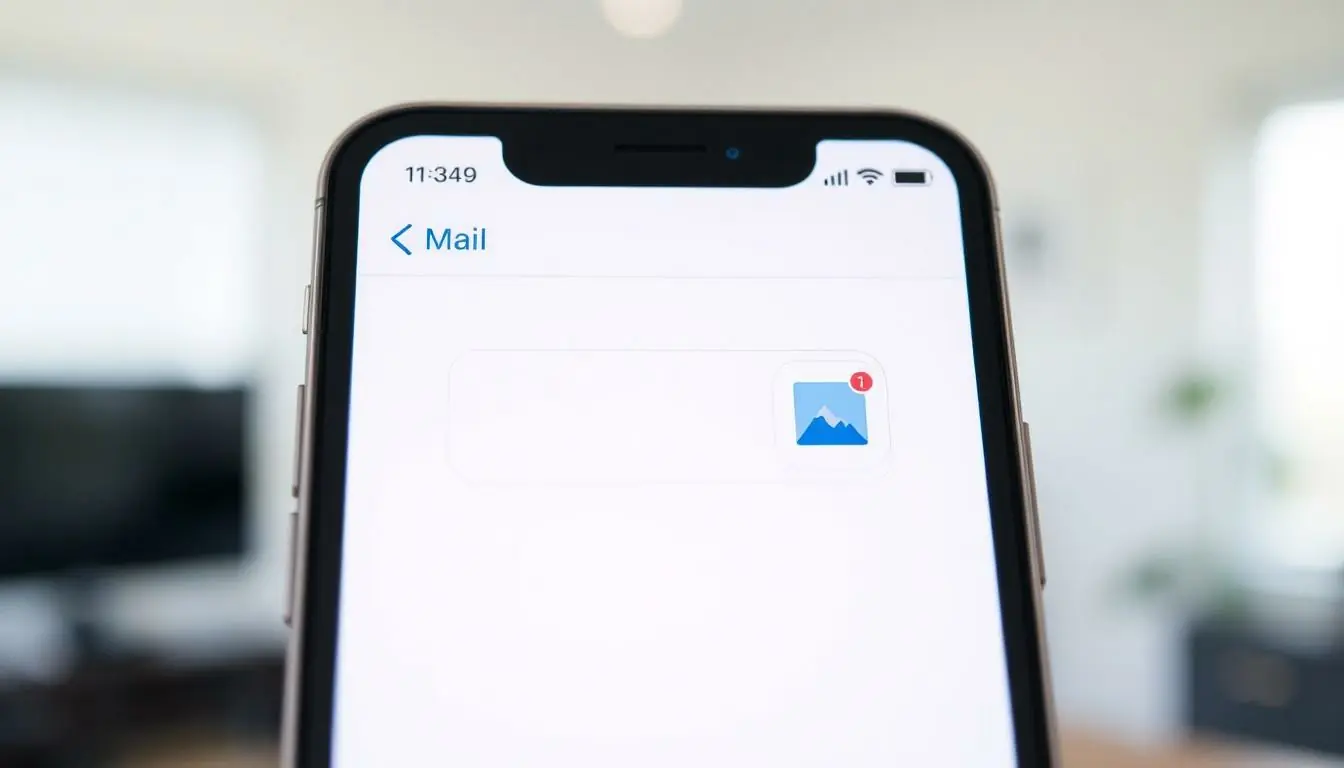In a world where a picture is worth a thousand words, sending that perfect snapshot via email should be as easy as pie—especially on an iPhone. Yet, many find themselves in a digital pickle, staring at their screens, wondering how to attach a photo without launching a full-blown tech crisis. Fear not! This guide will turn you into an email Picasso, effortlessly sharing your favorite moments with just a few taps.
Table of Contents
ToggleOverview of Email on iPhone
Email on iPhone serves as a convenient tool for communication. Users can send messages to individuals or groups instantly. Accessing email is straightforward through the Mail app, which comes pre-installed on every iPhone.
Multiple email accounts can be added within the Mail app. This versatility allows users to integrate personal and professional emails seamlessly. When composing a new message, individuals can utilize various features like formatting text, adding recipients, and including attachments.
Attaching images is a common requirement. Users often wish to send photographs either from their Camera Roll or directly from an app. It’s important to know that emails may have size limitations for attachments, typically around 25 MB for most email providers.
Navigating the process is simple: while composing, tapping the attachment icon reveals options for photo selection. Users can choose from recent photos or browse their library for older images. This efficient workflow enhances the email experience, making photo sharing quicker.
Utilizing email on iPhone also includes features like organizing messages into folders and marking important emails. Notifications alert users about incoming messages, ensuring they stay updated. This combination of features creates a robust email environment on iPhone for effective communication.
Steps to Attach a Picture
Attaching a picture to an email on an iPhone is a simple process. Following these steps can ensure successful sharing of images.
Using the Mail App
- Open the Mail app.
- Tap the compose button to create a new email.
- Select the body of the email where you want to insert a photo.
- Tap the screen to bring up formatting options.
- Choose the photo icon to access the photo library.
- Browse your Camera Roll or albums and select the desired image.
- Tap “Choose” to attach the image.
- Complete the email by adding recipients and a subject line, then tap “Send.”
Images typically should not exceed 25 MB, ensuring successful delivery.
Using Third-Party Email Apps
- Launch a third-party email app like Gmail or Outlook.
- Start a new email by selecting the compose icon.
- Tap the body of the email to open editing options.
- Look for the attachment icon, often resembling a paperclip.
- From the menu, select “Insert from Photos” or similar.
- Navigate through the photos to find the image you want to share.
- Tap the image to attach it.
- Add recipients and a subject before sending.
It’s crucial to note that file size limits may vary by app.
Tips for Successful Attachments
Attaching images to emails on iPhone requires attention to specific factors. Following these tips ensures successful delivery and enhances the user experience.
File Size Considerations
Size limitations impact email attachments directly. Images should generally not exceed 25 MB to ensure smooth transmission. This restriction applies regardless of the email service used. Large files may not send, leading to frustration for users. Reducing image size before attaching can facilitate delivery. Various apps allow users to resize photos, making this process easier. Keeping images within the limit helps avoid bounce-back issues and delays.
Supported Image Formats
Clearly defined image formats streamline the attachment process. JPEG and PNG are the most commonly accepted formats, ensuring broad compatibility. TIFF and GIF formats may be supported, but compatibility varies. Users need to be aware that certain email clients may not recognize all formats. Converting images to JPEG or PNG before sending can prevent potential problems. Checking file formats before attaching improves the chances of successful email delivery.
Troubleshooting Common Issues
Attachment issues often arise when sending pictures through email on an iPhone. Users may encounter specific problems that hinder the process.
Many find that attached photos exceed the 25 MB limit. Users can reduce image size using the built-in Photo app’s editing features. Resizing, cropping, or compressing images increases the chances of successful attachment.
Some may also experience difficulties when images fail to attach at all. Checking the internet connection is essential, as a weak connection prevents attachments from uploading. Users should connect to a stable Wi-Fi network or ensure cellular data is enabled.
Another common issue involves unsupported image formats. While JPEG and PNG are universally accepted, other formats may cause problems. Converting images to compatible formats will help avoid these issues.
If emails fail to send after successfully attaching photos, restarting the Mail app can resolve temporary glitches. Force-closing the app and reopening often clears software hiccups, restoring proper functionality.
Lastly, if using third-party email apps like Gmail or Outlook, specific troubleshooting steps may differ. Users should refer to the respective app’s support resources for tailored guidance.
Each of these issues has straightforward solutions. Recognizing common problems and their fixes improves the overall email experience on iPhone.
Conclusion
Attaching a picture to an email on an iPhone doesn’t have to be a daunting task. With the Mail app and its user-friendly features it’s easier than ever to share cherished moments with friends and family. By following the outlined steps users can quickly attach images from their library while keeping file size limitations in mind.
For those using third-party email apps the process remains straightforward with just a few adjustments. Troubleshooting common issues ensures a seamless experience whether sending JPEGs or PNGs. Embracing these tips will not only enhance communication but also make sharing memories a hassle-free endeavor.




